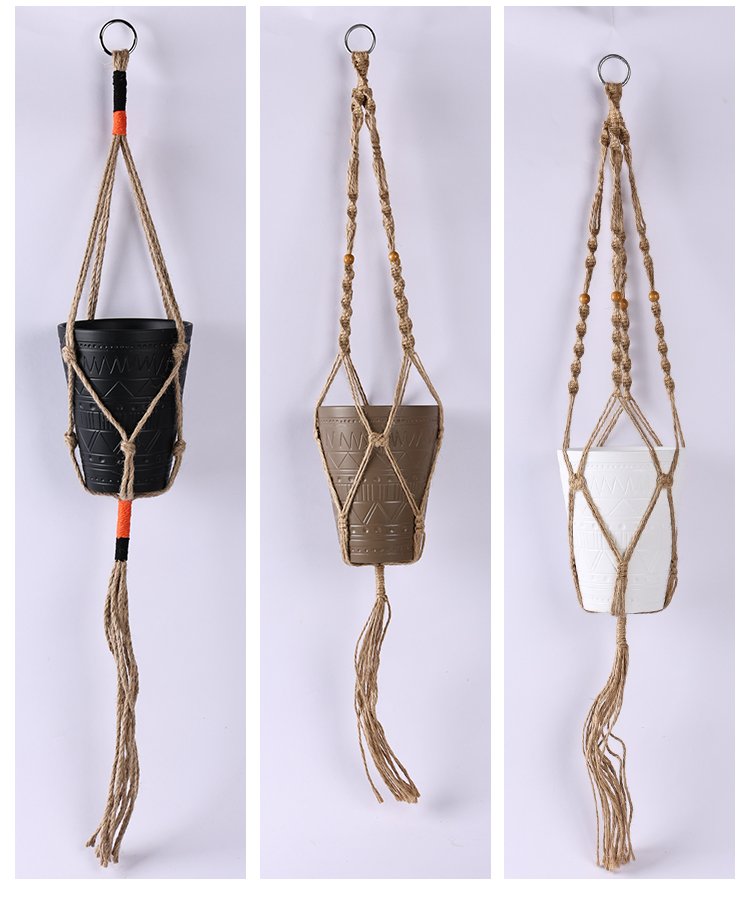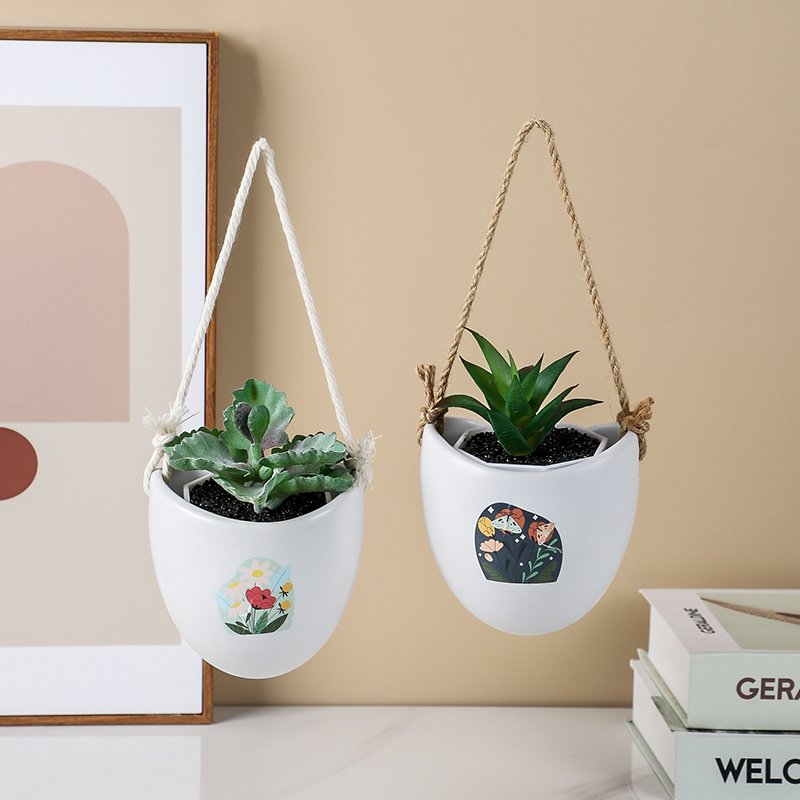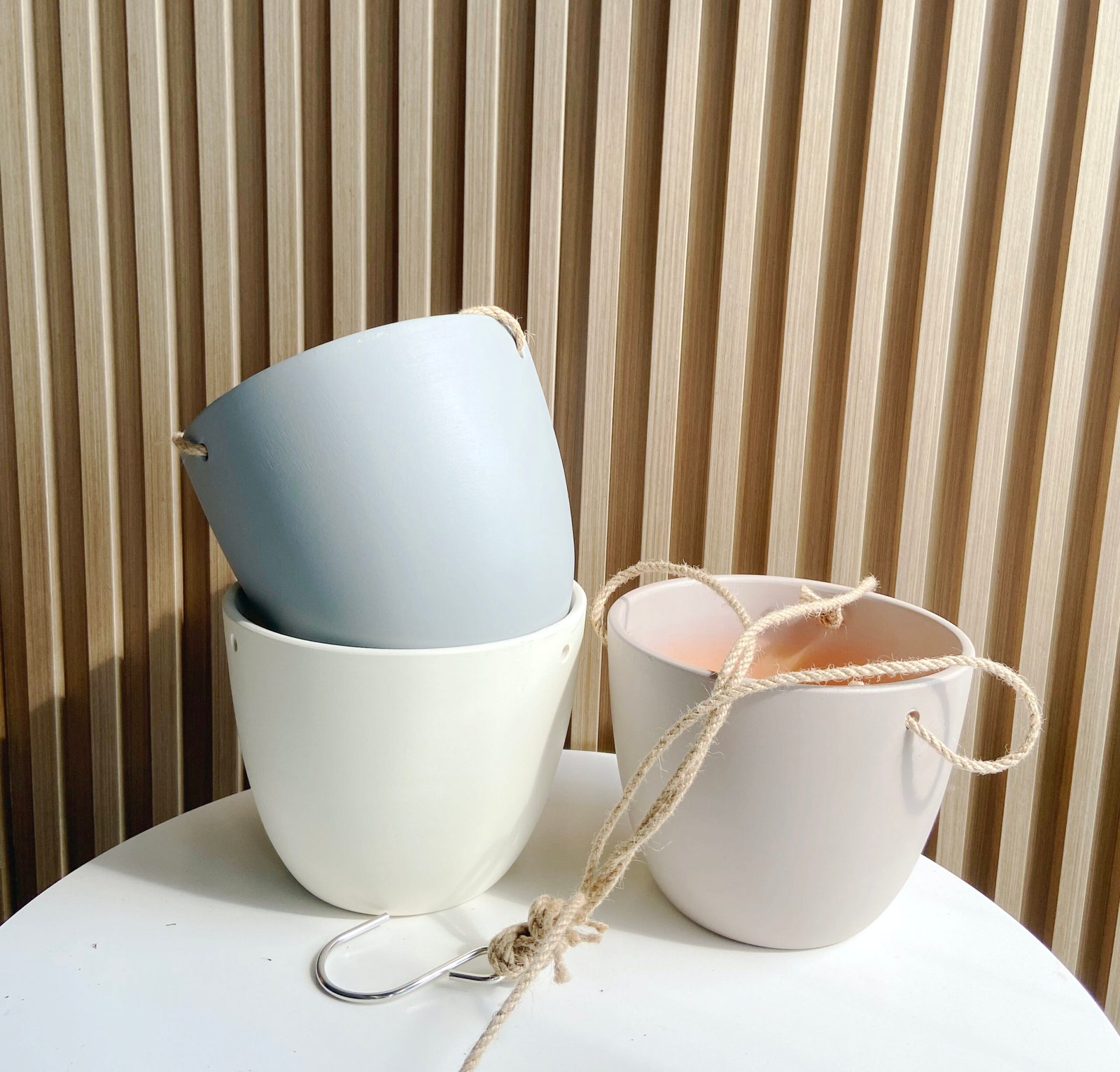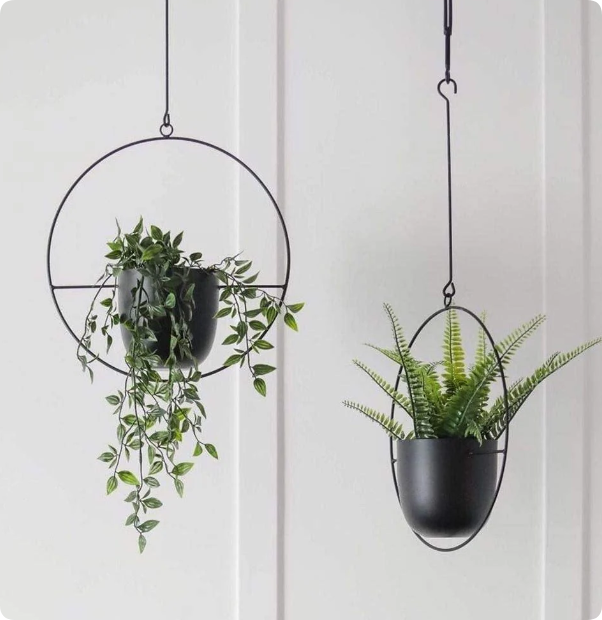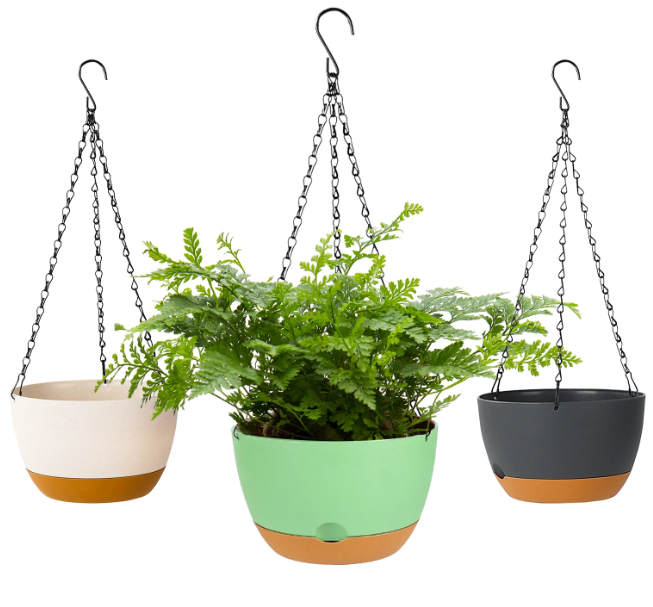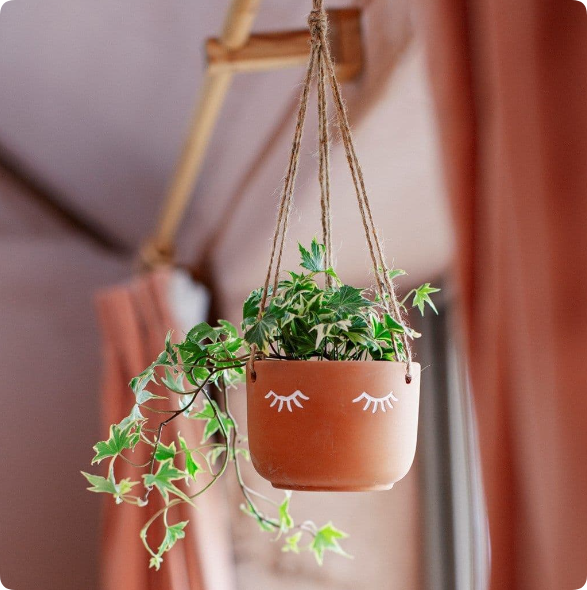Hanging planters are an attractive and space-efficient way to decorate your home or garden with plants. Not only do they add beauty to both indoor and outdoor spaces, but they also serve as practical solutions for small spaces where traditional pots may not fit. However, keeping hanging plants alive can be a challenge. Factors like water retention, proper drainage, sunlight, and suitable soil play crucial roles in maintaining healthy plants.
In this blog, we will explore key strategies to help you care for your hanging planters, ensuring your plants thrive and stay alive. As a trusted provider of ceramic planters, Hale Planter offers insights based on years of experience in manufacturing and distributing plant pots tailored to enhance plant health.
Choosing the Right Hanging Planter
Tips for Choosing Great Hanging Baskets and Annuals
The first step to keeping your hanging plants alive is selecting the right type of hanging planter. The material, design, and size all contribute to the plant’s well-being. Here’s a breakdown of common types of hanging planters and their impact on plant health:
Guide To Choosing the Right Hanging Planter
| Planter Material | Benefits | Challenges |
|---|---|---|
| Ceramic | Breathable, retains moisture, aesthetically pleasing | Can be heavy, prone to cracking if exposed to extreme weather |
| Plastic | Lightweight, inexpensive, retains water longer | Less breathable, risk of overwatering due to poor drainage |
| Terracotta | Breathable, excellent for drainage, promotes healthy root growth | Can dry out quickly, may require more frequent watering |
| Metal | Durable, stylish, heat-retaining | Prone to overheating plants in full sun, often requires a liner |
When choosing a hanging planter, consider the plant type and where you plan to hang it. For instance, ceramic hanging pots, like those offered by Hale Planter, are excellent for indoor use because they offer a balance of beauty and function. On the other hand, plastic or metal planters may be more suitable for outdoor settings due to their durability in harsh weather conditions.
Drainage is Key
One of the biggest challenges in maintaining hanging plants is ensuring proper drainage. Since hanging planters do not sit on the ground, they can easily trap excess water, leading to root rot. To avoid this, choose a hanging planter with drainage holes. Hale Planter’s ceramic hanging pots are designed with optimal drainage systems to prevent water buildup.
Additionally, adding a layer of small pebbles or gravel at the bottom of the pot before adding soil can help improve drainage, allowing excess water to flow away from the roots.
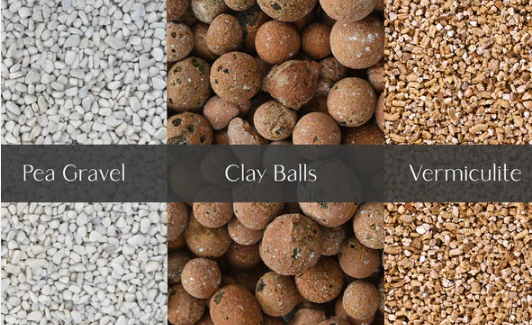
What Happens If There’s No Drainage?
If your hanging planter doesn’t have drainage holes, be extra cautious about watering. Overwatering can be deadly for your plants. Without a way to escape, the water can drown the roots, causing them to rot. Consider using a moisture meter to ensure the soil doesn’t stay too wet.
Choosing the Right Soil
Another essential factor for keeping your hanging planters alive is choosing the right soil. Unlike ground or potted plants, hanging plants are more exposed to elements such as wind and sun, which can cause the soil to dry out faster. Therefore, it’s important to use a soil mix that retains moisture but also provides good drainage.
For hanging plants, a mix of peat moss, perlite, and organic matter works well. This combination ensures that the soil retains enough moisture without becoming waterlogged.
- Peat moss helps with moisture retention.
- Perlite promotes drainage and aeration.
- Compost or organic matter provides essential nutrients for plant growth.
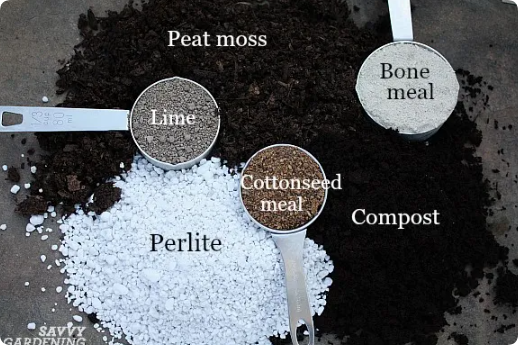
Avoid using regular garden soil, as it can compact and suffocate the roots, leading to poor plant health.
Watering Hanging Planters
Watering can be tricky with hanging plants. Due to their suspended nature, they dry out faster than plants in ground pots. The key is to find a balance: overwatering leads to root rot, while underwatering can cause wilting and dehydration.
How Often Should You Water Hanging Planters?
The watering frequency depends on factors such as the plant species, weather conditions, and the type of planter used. For most hanging plants, a thorough watering once a week should suffice. However, during hot summer months or in dry indoor conditions, you might need to water more frequently.
A good way to tell if your plant needs water is to check the soil. Stick your finger about 2 inches into the soil—if it feels dry, it’s time to water. For ceramic pots, the natural cooling of the pot will indicate soil moisture—if the pot feels cool to the touch, the plant likely doesn’t need watering.
Best Practices for Watering Hanging Planters
- Water early in the morning: Watering in the morning allows the plant to absorb moisture before the sun gets too hot, reducing the risk of water evaporation.
- Water slowly: This ensures that the water penetrates deeply into the soil, reaching the plant’s roots. Quick watering often causes water to run through the soil without proper absorption.
- Use a watering can with a long spout: This makes it easier to water hanging plants without creating a mess.
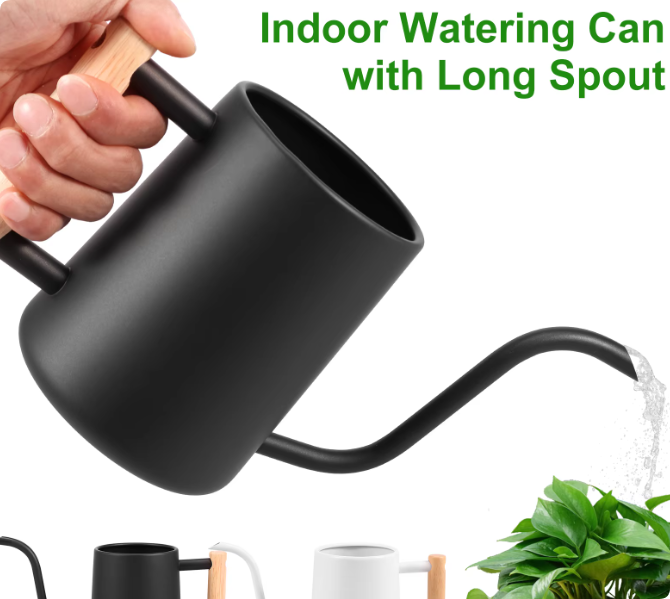
Sunlight Exposure
Hanging planters often face unique challenges when it comes to sunlight exposure. Depending on where they’re placed, they can either receive too much sunlight or not enough. Ensuring your plants get the right amount of light is crucial for their survival.
How Much Sunlight Do Hanging Plants Need?
Different plants have different light requirements. Most hanging plants thrive in indirect sunlight, but some, like succulents or certain ferns, may need more direct light. On the other hand, plants like pothos or spider plants prefer low-light conditions.
Common Hanging Plants and Their Light Requirements
| Plant | Light Requirements | Watering Needs |
|---|---|---|
| Spider Plant | Indirect light | Water once soil is dry |
| Boston Fern | Indirect light | Keep soil consistently moist |
| English Ivy | Bright, indirect light | Water when soil feels dry |
| Succulents | Direct sunlight | Water only when soil is dry |
| Pothos | Low to moderate light | Water when soil is slightly dry |
When selecting a location for your hanging planter, make sure to consider the plant’s light needs. Hale Planter offers a variety of ceramic hanging pots in different shapes and sizes that can fit any location—whether it’s in a bright sunlit room or a shady corner.
Fertilizing Hanging Plants
Because hanging plants are grown in a limited amount of soil, they require more frequent fertilization than ground plants. Without proper feeding, the soil in the hanging planter can quickly become depleted of nutrients, leading to poor plant growth.
A balanced, water-soluble fertilizer works well for most hanging plants. Apply fertilizer every 4-6 weeks during the growing season (spring and summer) and reduce it to once every 2-3 months in the fall and winter.
Protecting Hanging Planters from Wind
Hanging planters are more exposed to wind than traditional pots. Strong winds can cause them to sway or even fall, leading to damaged plants or broken pots. To prevent this, ensure your hanging planters are securely fastened, especially if placed outdoors.
If you live in a particularly windy area, opt for heavier ceramic or terracotta planters to reduce the risk of your planters tipping over. Hale Planter’s ceramic hanging pots are excellent options for windy environments as they are both sturdy and durable.
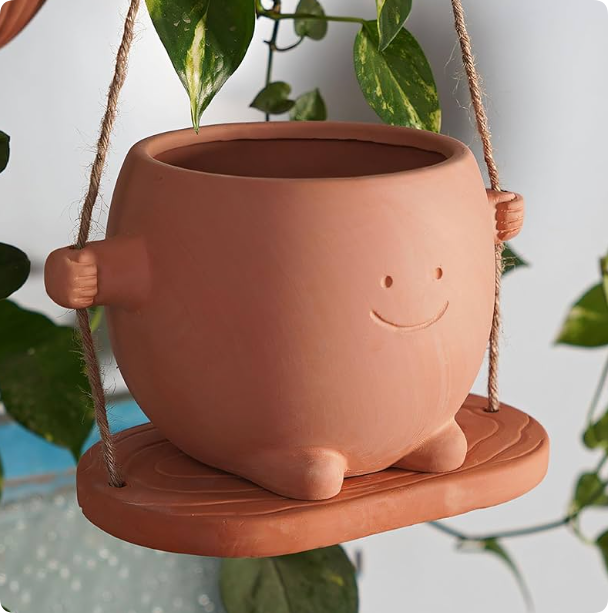
Conclusion
Keeping hanging planters alive requires careful attention to their unique needs, from choosing the right planter to ensuring proper drainage, sunlight, and water. By selecting the right hanging planter from Hale Planter and following the best care practices, you can enjoy thriving plants that beautify your space year-round.
Whether you’re a seasoned gardener or a beginner, maintaining the health of your hanging plants can be made easier with the right products and knowledge. Explore Hale Planter’s collection of ceramic hanging planters today to give your plants the perfect home and ensure they stay healthy and alive for years to come.

